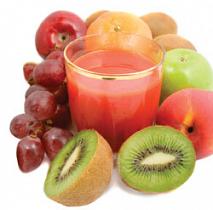Four Anti-Aging Eating Tips to Beautiful Skin and Amazing Energy
(Prevention.com) -- Glowing Skin, silky hair, and taut, toned muscles over age 40? Absolutely! Cheryl Forberg, RD, is redefining what aging looks (and feels) like in her new book, Positively Ageless. Here, she shares how to harness the stay-young power of food, plus offers select recipes based on the latest anti-aging research. 1. Eat Colourful Produce Every 4 to 5 Hours As you age, Forberg says, your skin's natural antioxidant protection drops; eating a diet rich in colourful fruits and veggies can help protect against wrinkles. There are hundreds of antioxidant nutrients, but the most important include vitamins C (found in tomatoes, citrus fruits, and bell peppers) and E (nuts and avocado), polyphenols (natural cocoa powder and berries), quercetin (onions and broccoli), and carotenoids (leafy greens, sweet potatoes, and other bright orange vegetables). One good option to boost your intake: Sweet Potatoes with Onion Confit. 2. Drink More Fluids As you get older, your sense of thirst naturally becomes less acute, making you more vulnerable to dehydration. One of the first side effects is a loss of skin elasticity, a major contributor to fine lines. Eight glasses of water a day is a good goal. If you're not a fan of water, sip green tea, fat-free or low-fat milk, and the occasional cup of coffee, and look beyond the glass. Fruits and vegetables are naturally packed with fluid--it's what gives them crispness. Boost their anti-aging potential by serving broth-based soups, such as Italian Vegetable Soup, at lunch or dinner. At breakfast, whip up a fruity smoothie, made with almond or soy milk or low-fat dairy milk and unsweetened fruit juice. 3. Get 30% of Calories from Protein After age 30, your muscle mass dwindles by approximately 3 to 8% per decade, causing you to lose strength, not to mention calorie-burning power. The antidote is a regular strength-training regimen--and dietary protein. Higher intakes of animal protein in particular help preserve muscle in women over 50, suggest several studies. Protein is also key to warding off fatigue, maintaining a steady blood sugar level, and promoting cellular repair and growth. Forberg recommends getting 30% of your daily calories from healthy protein sources such as lean meats, poultry, seafood, legumes, fat-free or low-fat dairy products, and traditional soy foods. A serving of Forberg's Roast Pork Tenderloin has 24 g. 4. Make Every Grain Count Stock your pantry with a variety of antioxidant-packed whole grains, she advises. Wild and brown rices, bulgur, farro, millet, quinoa, and oats are all good options. Whether you're serving a simple side dish or preparing a meat loaf or meatballs (like the Lebanese Kebabs), don't automatically reach for white rice or plain bread crumbs. Think whole grain, and you'll be rewarded with better flavour, additional fibber, and more anti-aging nutrients.
Comments
There are 0 comments on this post














